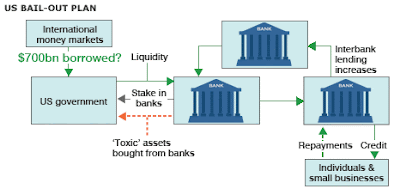Bankrate's Identity Crisis
Investors may see the banking info provider as part of the troubled mortgage industry. But one pro says it's a promising Web-advertising play
Even as its major advertisers -- banks and mortgage brokers -- limp through their worst crisis in decades, Bankrate (RATE) could actually prosper.
Bear Stearns (BSC) analyst Victor Anthony upgraded the Internet company's stock Nov. 26 from "peer perform" to outperform. Bankrate's growing web site and shrinking print operation makes money by helping customers find mortgages, deposit accounts and other financial products.
"The market has lumped Bankrate in with the housing and mortgage financing companies, who have seen their fundamentals deteriorate, rather than with the group of Internet stocks, who are benefiting from the secular shift of ad dollars to the Internet," Anthony wrote.
It's been a wild year for Bankrate's stock. It took a hit with the start of the subprime credit crisis in late July and then rebounded in the fall, partly due to speculation that the company might be bought. In early November, investors were underwhelmed by a mixed earnings report, which showed strong growth and site traffic but profit and revenues that didn't meet analysts expectations. Many investors lost faith in a buyout after company insiders sold shares.
Bankrate's stock has fallen 15% in November. That creates "an attractive entry point for investors," Anthony wrote. The stock moved higher Nov. 26 but then was pulled down along with the rest of the market. It ended up just 4 cents at $38.67 per share.
Anthony lays out a few positives for Bankrate amid the pain in the financial and housing sectors:
First, despite the worries, Bankrate has held onto advertisers like Citibank (C) and Bank of America (BAC).
Second, half of Bankrate's revenue doesn't come from mortgage ads but from other investment products, especially certificates of deposit. Countrywide (CFC) and IndyMac (IMB) have started advertising on Bankrate's deposit channel, Anthony says.
Third, the site is growing, with online revenues up 37% from a year ago, and that growth should continue and widen profit margins. The site will be re-designed early in 2008, and Bankrate has made new deals with sites like Yahoo! (YHOO), which should bring in more traffic.
Finally, more pain in the mortgage market may be Bankrate's gain. Mortgage rates on about $150 billion in non-subprime loans are expected to reset in 2008, which should drive many consumers to Bankrate.com looking to re-finance and lower their rates.
Federal Reserve interest rate cuts may also "spark consumer interest in searching for interest rate products," Anthony wrote.
Despite the optimism, Anthony admits Bankrate could be hurt if one or more of its advertisers were severely wounded by the financial crisis. There are other worries: Growth in page views for Bankrate is slowing. A recession, if it comes, would hurt. The site is facing more competition. And an anti-trust lawsuit, claiming Bankrate is a monopoly, was recently filed.
In its third quarter earnings release on Nov. 1, Bankrate executives said the firm was on track to meet its profit and revenue goals. But it may take another quarter or two for Bankrate to prove it is indeed immune to the mortgage and housing mess. Until then, the stock may continue its wild ride.









